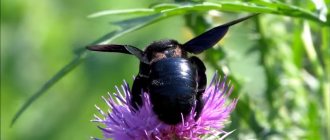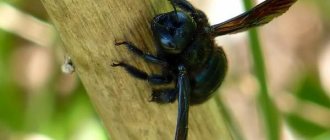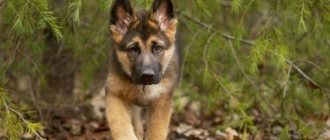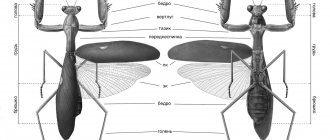Description
Bumblebees belong to the class of arthropod winged insects and are a type of bee. The original name of the genus in Latin is “Bombus”. Creatures are widespread on Earth, living in all corners of the planet where there are suitable living conditions. Now zoologists know about 300 different varieties of insects, which belong to fifty subspecies.
The two most common types of bumblebees are Bombus terrestris and Bombus lapidarius. They live in most countries.
Back view of bumblebee
You can distinguish a bumblebee from other bees by its large size and rounded contours of its body. Thanks to the hairs on their body, they adapt well to cold climates and do not freeze. They are also considered warm-blooded insects. When moving quickly, their body begins to generate heat, and the internal temperature can reach forty degrees.
People have a stereotype that a bumblebee bite is very painful, and in general it is better to beware of insects.
Such fears arose due to the large size of the creature and powerful jaws. However, in fact, this type of bee is the most peaceful and harmless. Interesting fact : the sting of a bumblebee is smooth and does not have serrations, unlike a bee's.
If the latter retains it in the victim, then the bumblebee, having made a bite, can pull it back into the body and fly away. Bumblebees never attack first. They do not use their jaws as weapons, despite their power, and their only defense is their stinger. But the individual will use it if there is no other way out. Moreover, only females and insects that build a hive have it. Ordinary males do not have a sting and are almost completely defenseless. In nature, the bumblebee brings great benefits by pollinating a large number of flowers.
Bumblebee - description, structure, characteristics. What does a bumblebee look like?
Bumblebees are quite large, beautiful, brightly colored insects. Females are larger than males. On average, the body length of a female is from 13 to 28 mm, the size of a male bumblebee varies from 7 to 24 mm. Some species, such as the steppe bumblebee (lat. Bombus fragrans), grow up to 35 mm in length. The weight of a bumblebee uterus can reach 0.85 g, while working individuals weigh from 0.04 to 0.6 g. Moreover, insects can carry an amount of pollen equal to their own weight.
The bumblebee's body is thick and heavy. The wings of an insect are relatively small, transparent, consisting of two halves moving synchronously. A bumblebee flaps its wings at a speed of about 400 beats per second. The trajectory of each wing resembles an oval that moves at a large angle. With each flap, the bumblebee's wings turn over, taking a slightly different position: when the wing goes down, its upper part is directed up, and vice versa. The bumblebee's speed reaches 3-4.5 meters per second (10.8-16.2 km/h).
Photo credit: USGS Bee Inventory and Monitoring Lab, Public Domain
The female's head is slightly elongated, broadly rounded at the back. In the male it is triangular or almost round, with a clearly visible dotted line on the crown and front part.
Photo credit: USGS Native Bee Inventory and Monitoring Laboratory, Public Domain
Bumblebees have powerful jaws-mandibles that overlap when approaching, which are used for gnawing plant fibers and forming honeycombs. The insect can bite, using its jaws for defense.
The eyes of a bumblebee are bare, not covered with villi, and located in a straight line. The antennae of males are longer than those of females.
Photo credit: Sam Droege, Public Domain
Bumblebees have a proboscis with which they collect nectar. In different species it has different lengths: for example, in the small ground bumblebee (Latin Bombus lucorum) its length is 7-10 mm, and in the garden bumblebee (Latin Bombus hortorum) it is 18-19 mm. This size of the proboscis allows bumblebees to obtain nectar from flowers with a deep corolla, such as clover flowers.
Photo credit: USGS Bee Inventory and Monitoring Lab, Public Domain
The abdomen of bumblebees is not tucked towards the apex. At the end of the abdomen, females have a sting. The male does not have a sting; in its place are dark brown, highly chitinized genitalia. In a calm state, the bumblebee's sting is not visible. It is hollow inside and, unlike bees, smooth, without jagged edges. When biting, the female bumblebee pierces the skin of the enemy, releases a drop of poison and pulls the sting back out. Thus, a bumblebee can sting repeatedly and without harm to itself. In this case, the bee’s sting remains in the body of the bitten person, and the bee itself dies.
Bumblebees have 6 legs. On the smooth outer surface of the hind tibia, the female has a “basket” for collecting pollen - an area surrounded by hard, straight hairs. In the male, the hind tibiae are usually widened at the apex, and, depending on the species, their outer surface is more or less densely pubescent and convex.
Photo credit: USGS Bee Inventory and Monitoring Lab, Public Domain
The hairs that cover the bumblebee's body are black, white, yellow, orange, reddish or gray. The color of the insect is usually striped. It is rare to see completely black bumblebees.
It is believed that coloration is directly related to the balance between camouflage and body thermoregulation. Each type of bumblebee has its own, strictly defined coloring, by which it is easy to distinguish.
Photo credit: Ivar Leidus, CC BY-SA 4.0
Appearance and features
Yellow pollen on the black stripes of a bumblebee
A bumblebee has a massive body compared to other bees. Impressive dimensions are achieved due to developed pectoral muscles. They also serve as an additional source of heat along with the fluff. In cool weather, the insect begins to intensively contract its muscles, thereby increasing body temperature. This helps to warm up the body and go to pollinate flowers earlier than other types of bees.
On the sides of the body there are three pairs of limbs: two small legs in front and four large ones coming from the center. Bumblebees fly thanks to two wings located on the front of the body.
Bumblebees are black in color, with two yellow stripes on top: at the head and under the wings. There is also a white stripe in the sting area. The entire body is covered with small hairs, which determine the color pattern.
The head is quite small in relation to the body. At the top there are two long antennae planted next to the eyes. In front there is a powerful jaw, inside of which a long tongue is hidden.
Depending on the type, the insect can be of different sizes. Steppe bumblebees are the largest and can grow up to 3.5 cm in length. In common species, males reach up to 2.5 cm. Females are larger: their length reaches 2.9 cm. The body weight of males does not exceed 0.6 g , but for women it often exceeds 0.8 g.
Features of bumblebees and differences from bees and wasps
Based on certain characteristics, you can easily distinguish bumblebees from their closest relatives - bees and wasps.
Bumblebees are noticeably larger than bees and wasps; in particular, this effect is achieved due to a thick layer of villi. Also, the coloring of wasps and bumblebees is brighter and more intense compared to bees.
The main difference between bumblebees and wasps is that they are vegetarians and feed exclusively on pollen and nectar. Wasps eat everything, not disdaining to eat other insects. In addition, they make preparations for the winter and leave with the whole family for the winter itself.
Wasp, bumblebee and bee.
Wasps and bumblebees can easily remove their stings from the victim and reuse them - they are smooth, without jagged edges. Moreover, wasps are very easy to anger, but bumblebees are not interested in this, and they sting very rarely. Bees leave their sting in the victim, as it is barbed and has a lock on the end, and die immediately, so they only use the sting when defending the hive.
All of the insects described above can produce honey, but only bee honey is widely consumed, while the rest are of little value to people or are too difficult to scale up production.
Where does the bumblebee live?
Habitat of bumblebees
Due to their good adaptation to environmental conditions, bumblebees live in almost all corners of the planet. Exceptions are places where there is very little vegetation, as well as in hot climates. At high temperatures, the insect begins to feel uncomfortable due to the fact that its body already generates a lot of heat during activities.
In some places the number of bumblebees is small. For example, the Arctic Circle is home to small populations of individual species adapted to cold climates and capable of pollinating local vegetation. In Greenland, Alaska and Chukotka they can only be found in alpine meadows. Small populations also occur in lands with a tropical climate.
Interesting fact : in some countries, gardeners specially breed garden bumblebees to increase productivity.
Most species of bumblebees live in Russia, Europe, Asia and America. They enjoy the local climate and abundant vegetation. Not so long ago, insects were specially brought to Australia, to the state of Tasmania. There they are used to increase the yield of clover, and bumblebees cope with their task with five points. And their peacefulness simplifies the process of using them.
Interesting: Mosquito: description, nutrition, habits, why they bite, reproduction, types, photos and videos
Habitats
Bumblebees live almost everywhere, on all continents, with the exception of the cold
Antarctica. They are especially common in temperate latitudes, but there are certain species of bumblebees that live even beyond the Arctic Circle, in the tundra. Bumblebees are a frequent visitor in mountainous regions, but closer to the equator, in the tropics, there are not so many bumblebees; for example, only two species of bumblebees live in the Amazon forests. Also, at the beginning of the twentieth century, some species of garden bumblebees from Europe were brought to Australia and New Zealand, where they live to this day.
In general, bumblebees are the most cold-resistant members of the bee family. Despite the fact that they do not like the hot tropics very much, all this is due to the peculiarity of their thermoregulation, the fact is that the normal body temperature of a bumblebee can reach 40 degrees Celsius, exceeding the ambient temperature by 20-30 degrees. This increase in temperature is associated with the rapid contraction of the bumblebee's chest muscles, the same contraction that is the source of its signature buzzing.
Habitat and lifestyle of bumblebees
Bumblebees settle where the plants they are interested in grow.
Since several hundred species of bumblebees live on Earth, each has certain characteristics depending on environmental conditions and habits.
Bombus terrestris lives in Africa. It is black in color with small white spots on its belly. These bumblebees build their hives in the ground; this is done by the workers.
Bombus lapidarius is common in Europe. On its black body there are red-orange stripes, by which it is easy to distinguish it from other representatives of bees. If the African type of insects grows up to three centimeters, then this one is usually no more than two in length. They build their nests on rocks. This species is also characterized by cannibalism: females often feed males to their larvae.
A bumblebee collects pollen and nectar using its proboscis
Regardless of the species, bumblebees live in flocks and have a clear division into roles: queen, males and workers. The queen actively participates in the life of the nest and gives birth to offspring. Males and workers are engaged in approximately the same activities, but the former pay more attention to pollinating flowers, the latter - to expanding and strengthening the house. While bees try to carefully design the nest, planning entrances and internal structure, bumblebees often neglect this. Their houses look shapeless, as if they were made in haste. The material used is fur and wax, which are simply piled up and tunnels are dug inside.
Interesting fact : in order not to build a nest, bumblebees can occupy a mouse hole, driving out the previous occupant.
Bumblebees are very hardworking and go out every day to pollinate flowers. At the beginning of the day, the queen climbs onto the roof of the nest and begins to make loud sounds, thereby awakening all members of the flock from sleep. Having woken up, the insects go to work.
Bumblebee nests
The nest or “bombidarium” is built both on the ground and underground. It is worth noting that not all species build their own home on their own - there are both parasitic bumblebees that take over other people's nests, and cuckoo bumblebees that do not build nests at all.
Many species create nests underground, and can sometimes nest in the burrows of small rodents. This is due to the fact that the mouse smell attracts females. Also in the burrows there is the necessary material for insulating bombidariums, for example wool or straw. In exceptional cases, they can even drive out the inhabitants of a mouse hole and occupy it themselves, so as not to have to build a nest.
Several species of bumblebees set up their hives on the ground - in abandoned bird nests, on grass and in litter, under plants. There are also individuals that make their homes high above the ground - in tree hollows.
The shape of the home may vary depending on the location used by the insects. The hives are insulated with hay and moss and reinforced with our own wax. From this wax they build a kind of dome that protects against excess moisture, and it also serves as a disguise for the entrance to protect against attacks from uninvited guests.
When it is too hot outside, insects can ventilate the nest using their wings - their rotation speed is even greater than that of the hummingbird. This is an important process for the survival of the colony, because temperatures above 45 degrees are fatal to the offspring.
What does a bumblebee eat?
Clover is the favorite delicacy of bumblebees.
Perhaps these creatures are the most finicky of the bee order in terms of food. If wasps can eat jam, honey, tree sap and other sweets, then bumblebees have only pollen and nectar in their diet. However, the list of plants from which they collect food is very long. They pollinate almost all flowers that grow in their habitats. It is often used in gardening. If a beehive has appeared next to the garden, there is no doubt that in the near future there will be a large harvest in the garden beds.
The larvae also need food, so upon returning to the nest, individuals try to bring as much nectar as possible, which serves as food for future offspring. If necessary, the cubs are also fed home-produced honey.
The bumblebee's favorite flower is clover. He is attracted by the smell and color of the plant, and as he flies past he cannot resist. It has also been noticed that bumblebees, just like other bees, are more willing to sit on bright buds than on those that have faded colors. However, if there is no other vegetation nearby, the insect will not hesitate to land on them.
Bumblebee feeding
About 40 species of bumblebees consider clover nectar as a delicacy. Insects also land on other flowers. Additionally, relatives of bees drink tree sap. So, it becomes clear what bumblebees are doing on the trunks.
Bumblebees produce honey, but in limited quantities. Access to treats is also limited. Adults abstain, leaving the honey for the larvae. Bumblebee honey is thinner and lighter than bee honey. The aroma of the product is also less pronounced. The sweetness of bumblebee honey is also minimal.
Character traits
Bumblebees are friendly and peaceful animals.
Bumblebees live in small flocks. Often the total number of individuals does not exceed hundreds. They are divided into large queens, responsible for the production of offspring, into males, and into small worker insects. Despite the developed social structure, the individual is not attached to the nest and at a certain moment may not return to it and find a new home, joining another flock. Moreover, this is mainly done by males who have already helped females with the production of offspring.
Interesting: Spiders










